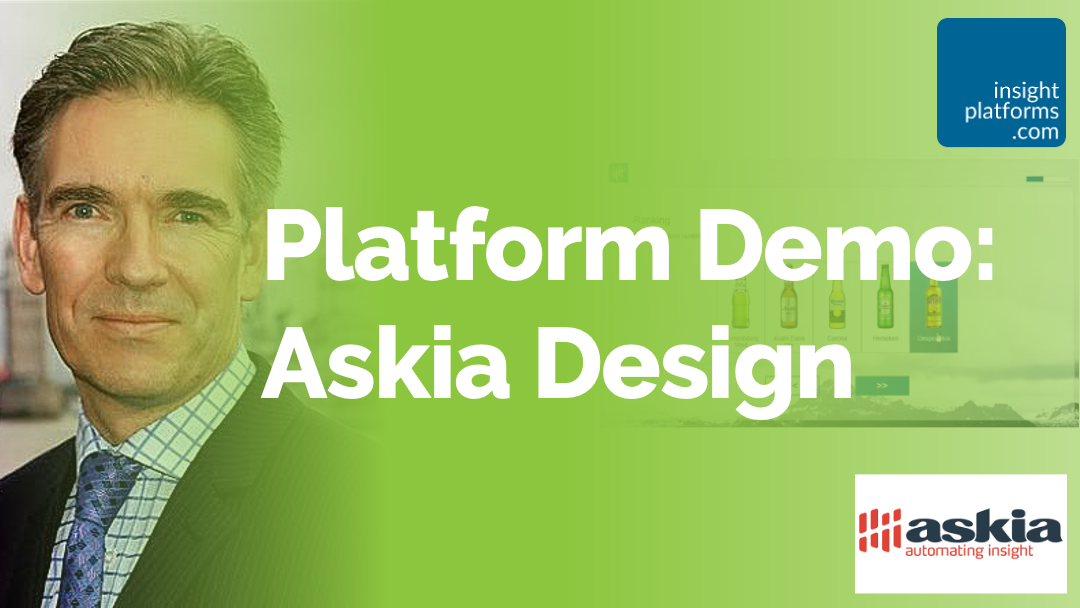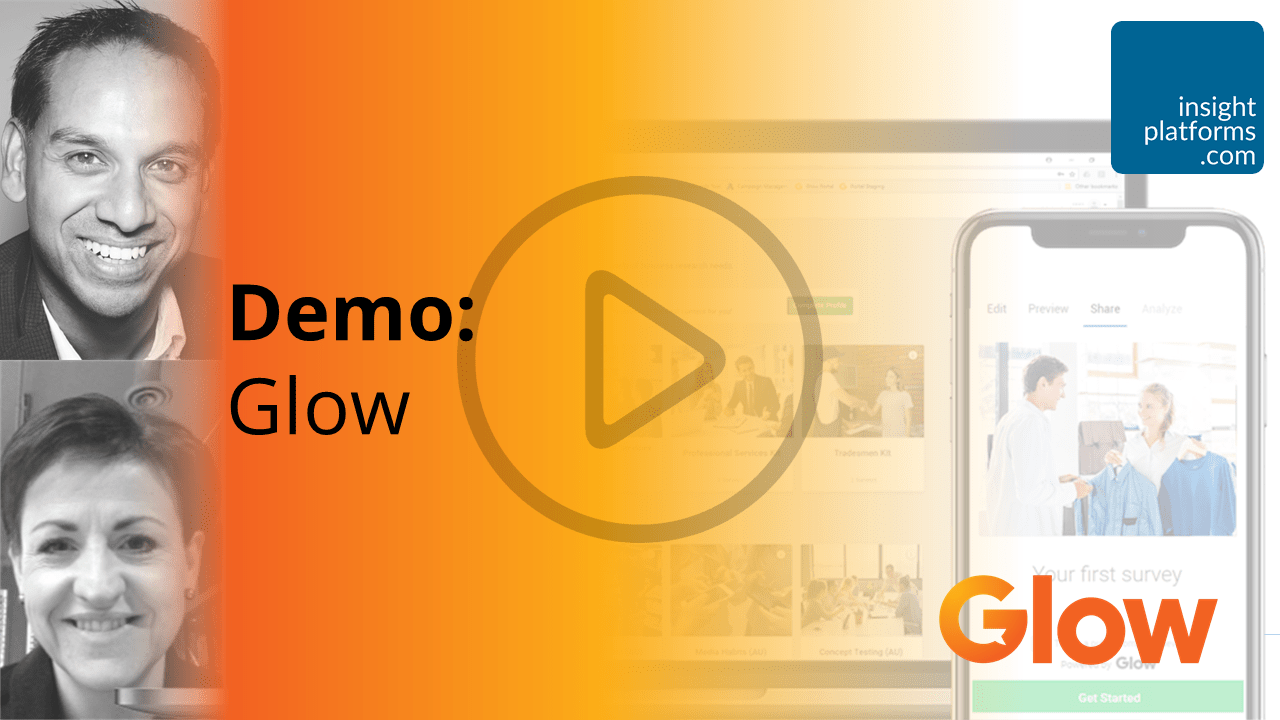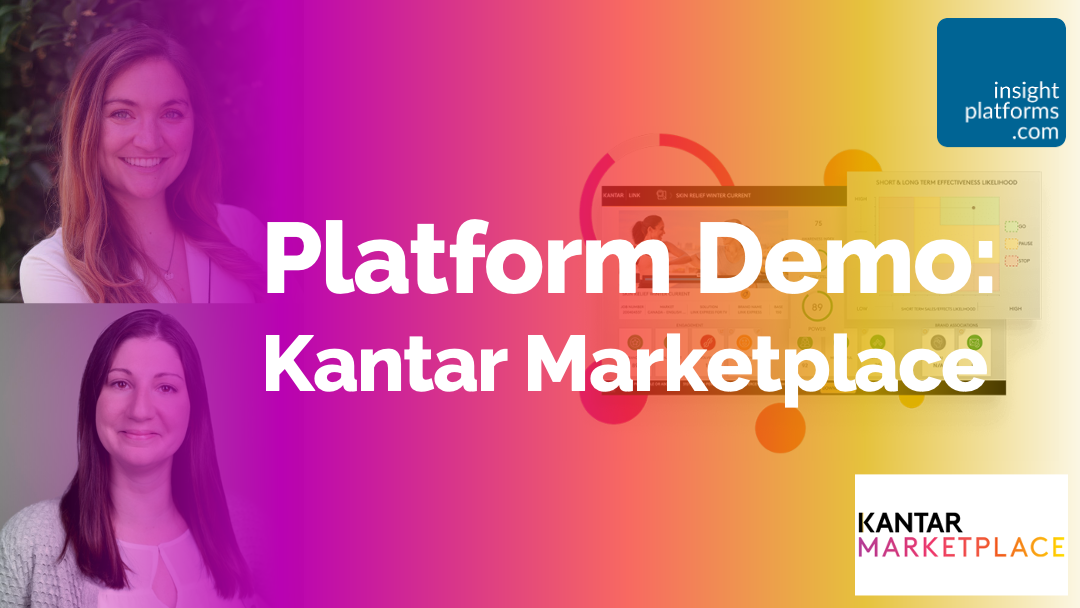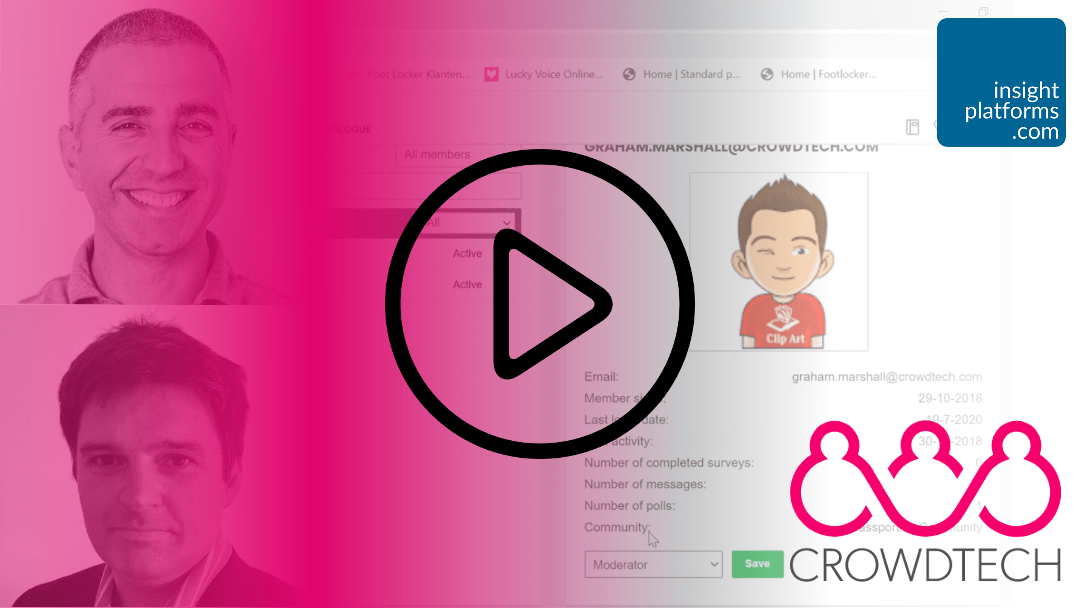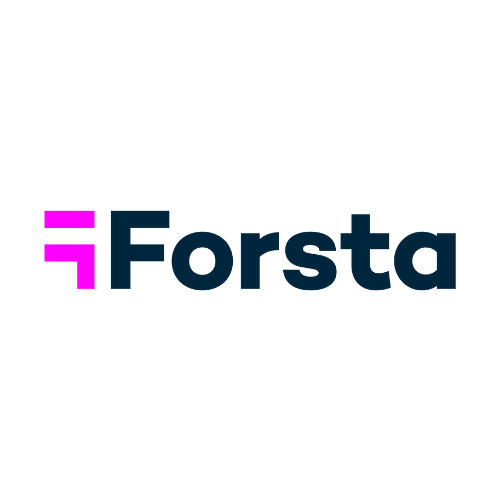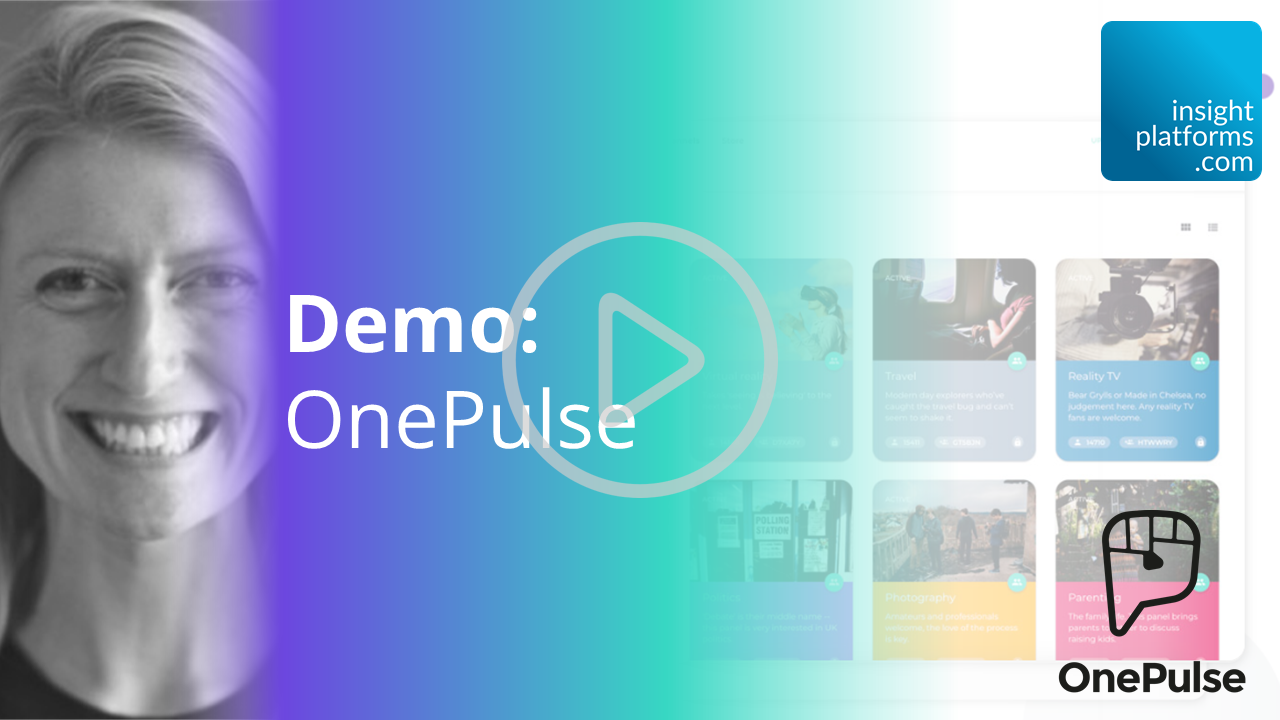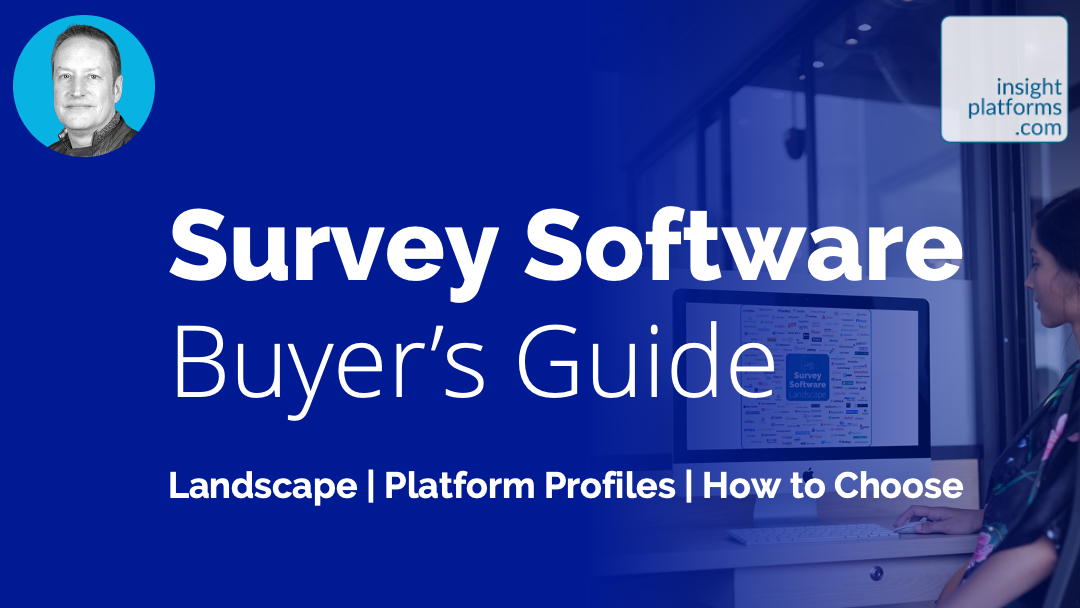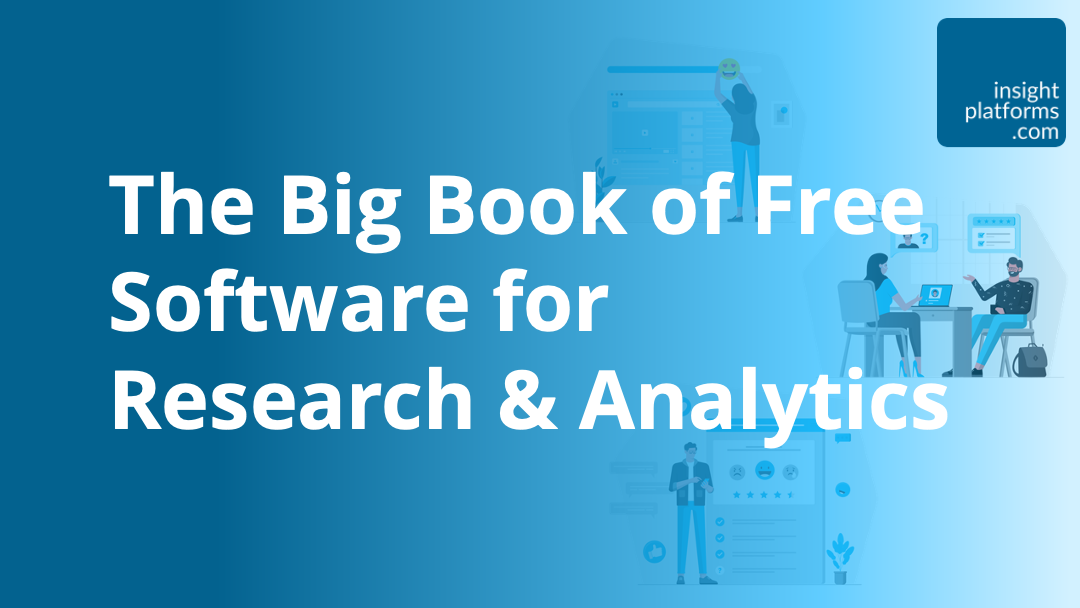You might think ‘survey software’ sounds like a clear and homogeneous category.
You would be wrong. It’s actually incredibly diverse.
Hundreds of different software tools exist in a dozen sub-categories: from surveys for hardcore researchers to simple popups for capturing NPS feedback – and all points in between.
A quick look at the survey software landscape reveals just how many tools there are.
The Insight Platforms directory lists over two hundred software platforms with some sort of survey capability.
So how do you choose what’s right for you?
The Buyers Guide to Survey Software, our premium course, gives you a detailed breakdown of the landscape, including in-depth profiles of leading survey platforms and a structured series of questions to ask when assessing different partners.
Keep reading below to get an overview of the different types of survey software.
The Twelve Types of Survey Software
One important thing to bear in mind here: many of these categories are closely related and even overlap, so you should take the distinctions with a pinch of salt. Some major providers like Forsta or Qualtrics straddle several different areas; others are highly specialised in their niche.
1. Multi-Mode Survey Software
Multi-mode – or cross-platform – survey software allows you to create surveys that people can answer in different ways: on the web, over the phone, face-to-face – even scanning in completed paper questionnaires.
The growth in online surveys have been so dramatic that it’s tempting to think that telephone and face-to-face interviews have been consigned to history. That’s not the case. Not everybody is connected to the internet. Even those who are online may have accessibility issues for screen-based surveys. And some research methods can only be done in person.
If you’re running multi-country surveys, for example, you may need telephone or face-to-face interviews to reach people in certain locations. And it’s not just about representation in different countries. Social and public sector research often relies on sampling methods that can’t be replicated online – even in countries with high internet penetration.
Many of the cross-platform survey tools have been developed over several years to meet these kind of messy, complex and varied research needs: Askia, Forsta, Voxco and Snap Surveys are all good examples of multi-mode survey software that caters to agencies and specialist survey researchers in business or the public sector.
2. General Purpose Online Survey Software
Actually, all the categories that follow are online-only.
This specific one is for web-based software that lets you to design your own surveys from a blank sheet of paper if you want to. You get completely flexibility to ask whatever you want.
Almost all of these tools include templates for different survey types – testing product ideas, pricing research, event feedback etc – but with these platforms you’re not restricted to the template. They just give a helping hand so you don’t have to start from scratch every time.
Some very known software tools in this area include Forsta (again), Alchemer, SurveyMonkey, QuestionPro and Qualtrics.
Newer kids on the block include Glow, Zinklar and quantilope; and several of the research panel providers like Dynata, Toluna (with TolunaStart) and PureSpectrum have either built or bought DIY survey tools in recent years.
Finally in this group, there are survey platforms that focus heavily on the needs of non-expert researchers – marketers, designers, product managers and others – by making their tools extremely easy and intuitive to use. Tools like Attest and Appinio are good examples here.
3. Agile and Automated Survey Software
Agile insights and automated surveys: wonderful buzzwords, but what do they really mean?
These tools are about creating easy and quick ways of doing things that previously would have taken specialist skills and a long time. Instead of creating studies from scratch each time, these survey-based platforms have configurable templates with ‘fill in the blanks’ setup for standard research methodologies like testing advertising, product concepts, ideas, packaging designs, claims – really any survey methodology that can be structured in a consistent way.
And it’s not just the simple stuff: many of these agile and automated survey platforms now cover much more complex areas like price testing, conjoint analysis, MaxDiff and others. Making these approaches easier to use means that more people can benefit from sophisticated methods that previously would have needed expert teams with marketing scientists and statisticians.
Good examples in this space include Upsiide, Cambri, Zappi, quantilope, TolunaStart, Conjoint.ly and Kantar Marketplace.
4. Community Panel Survey Software
Community panels (AKA insight communities AKA private panels AKA customer consulting boards) are private groups of opted-in participants (customers, patients, subscribers …) who take part in regular research and feedback exercises.
Many communities are qualitatively focused with online focus groups, co-creation exercises and discussion forums the main activities; but larger communities and panels make extensive use of surveys as well.
In fact, the real power of many communities is in their ability to combine quantitative surveys with qualitative depth.
Community panel platforms with survey native tools includes Alida, Q One Tech, Researchbods, Fuel Cycle, Crowdtech, FlexMR, Krealinks, Toluna, LiveLoop, Platform One and others.
5. Customer Experience Management Software
Customer experience management is a high growth area with its roots in survey-based feedback: what used to be called customer satisfaction surveys.
Over the last decade or so, the experience management category has expanded and now includes both survey-derived feedback – from continuous tracking surveys, event-triggered feedback and other sources – as well as behavioural and observational measures of customer activity: e-commerce purchases, customer complaints, online reviews and more.
Bringing all these signals together helps to build an overall picture of the customer experience, levels of satisfaction and likelihood to churn. CX, broadly defined, now comprises activities as seemingly disparate as digital analytics, UX design and contact centre management.
But survey software is at the heart of many CX programmes, and the solutions in this space typically have robust data collection capabilities; tight integration with business systems and data (like CRM or contact centre software); and ‘closed loop’ capabilities to ensure that managers can act quickly on the data to resolve customer experience problems.
The leading players in this area include Forsta, Qualtrics, Medallia, InMoment and NICE-Satmetrix.
6. Employee Experience Management Software
Employee experience management is closely related to Customer experience management: you can’t expect happy customers if your staff are miserable, or so the logic goes.
Many of the same platforms that provide CX software above also have employee engagement components as well; but there are also specialist employee survey software tools like Culture Amp, Office Vibe and Empuls. These tools typically combine survey feedback with other capabilities like performance management, rewards and recognition.
7. NPS Survey Software
Nowadays, NPS surveys are an essential component of most customer experience feedback programmes. They are also the most widely adopted standard type of micro surveys (see next).
The main CX survey platforms listed above all have templated options for NPS surveys; many have also acquired specialist digital NPS tools and folded them into their offering.
Qualtrics, for example, acquired Delighted; Medallia acquired Promoter.io; NICE acquired Satmetrix; and more recently, InMoment acquired Wootric. All these companies started out as specialist digital NPS platforms with the ability to ask targeted surveys to users of websites or smartphone apps, and to integrate data with CRM databases, E-Commerce systems or web analytics platforms.
Other NPS specialists include Ask Nicely, Retently and YesInsights.
8. Micro Survey Software
People don’t want to take part in very long surveys. Who would have guessed?
Micro surveys (1 to 10 questions) are an effective, light touch way to collect information from large numbers of people quickly. In some cases, survey responses can be easily linked to behavioural metrics or other data.
Sprig, for example, is a research platform that allows you to ask website or app users up to three questions at a time. As the site or app owner, you can combine whatever else you know about these users with their survey responses to get a fuller picture of your audience.
OnePulse and Find Out Now are also good examples of Micro Survey platforms. Each has its own large community of survey participants; surveys are limited to 3 questions; and both allow you to re-target people who have give specific answers to previous questions. These are as close to real-time survey research as you will come: you can literally watch hundreds of answer stream through in the space of a few minutes.
And of course, honourable mention to Google Surveys – one of the originators of the Micro Survey format, initially with a single question but allowing for up to 10 in a single survey.
9. In-App Survey Software
In-app or on-site surveys are great for understanding digital user behaviour, intent and satisfaction.
Insights help designers, product managers and researchers to identify issues, fix bugs or improve conversions.
Good examples of specialists in this area are Usabilla, acquired by SurveyMonkey and Mopinion.
More commonly, in-app and on-site survey features are now being bundled with digital analytics and product management software.
Hotjar is primarily a user analytics platform to capture heatmaps, mouseflow and click behaviour – but it also has the ability to conduct short surveys. Pendo is product management and user onboarding software – but it, too, has the ability to survey users and tie their responses to other behavioural data.
10. Ratings & Reviews Software
Ratings on reviews tools are very similar in content and format to NPS feedback: a score followed by an open-ended comment.
The output is often used to demonstrate social proof on an individual website or to rank performance on consolidated review or e-commerce sites.
Specialist companies in this space include Bazaarvoice, Yotpo and Trustpilot; but the lines are increasingly blurring between Ratings and Review platforms and Customer Experience or NPS feedback – with companies like Bazaarvoice and Qualtrics straddling all of these different areas.
11. Conversational Survey Software
‘Conversational’ formats are a genuine innovation in survey research. This actually covers three related areas.
The first is surveys conducted through messaging platforms – Facebook Messenger, WhatsApp, WeChat – or websites that mimic the chat interface. This encourages far natural feedback from people than forcing them through traditional survey structures. Companies like Rival Technologies and SurveySparrow have led the way here.
Next, there are voice surveys. Phebi allows survey participants to speak, rather than type, their answers to open-ended questions. Phonic is voice research platform that also includes features for video, image sharing and screen recording.
The final group is Artificial Intelligence or Chatbot Surveys. Increasingly, these tools are blurring the boundaries between survey research and qualitative research ‘at scale’.
Companies like Inca and GroupSolver collect feedback from hundreds or thousands of people using a bot and a chat interface. Surveys can include contextually-triggered probes to get deeper verbatim responses, and the open-ended data can be analysed in real time to understand themes and sentiment.
12. Form Builders, Quiz and Poll Software
Forms are used throughout the internet for enquiries, user registration, purchase checkout … they’re everywhere. Form software is also adding more survey capability all the time.
Many people use Google forms as a survey tool; Typeform is one of the innovators in the hybrid form / survey category; and inevitably it success has spawned copycats and derivatives. We use one of these – Formaloo – for our own feedback surveys.
Polling and quiz software is typically used more for audience engagement and retention than it often is for real research and insight.
However, as with all of these categories, there is an increasing degree of crossover. Survey Anyplace and Opinion Stage are good examples
13. Free Survey Software
Bonus category. Actually, this is really a part of all the other 12 categories: you can find free trial and freemium versions of all different types of survey software.
Find out more by downloading our (free) ebook: The Big Book of Free Software for Research & Analytics.
The Buyer’s Guide to Survey Software
Hundreds of software tools, a bewildering choice of features, all at wildly different prices.
How do you choose the best survey tool for your specific needs?
The Buyer’s Guide to Survey Software is a premium video-based training course for anyone choosing survey technology for themselves, their agency or their team.
Over 25 bite-sized video lessons, you’ll learn more about the survey technology landscape, see profiles of key players and get a framework of questions to ask when evaluating suppliers.
Launching on-demand February 25th, sign up to join the live webinars on Feb 22nd or 24th – then get 12 months access to all video content.

